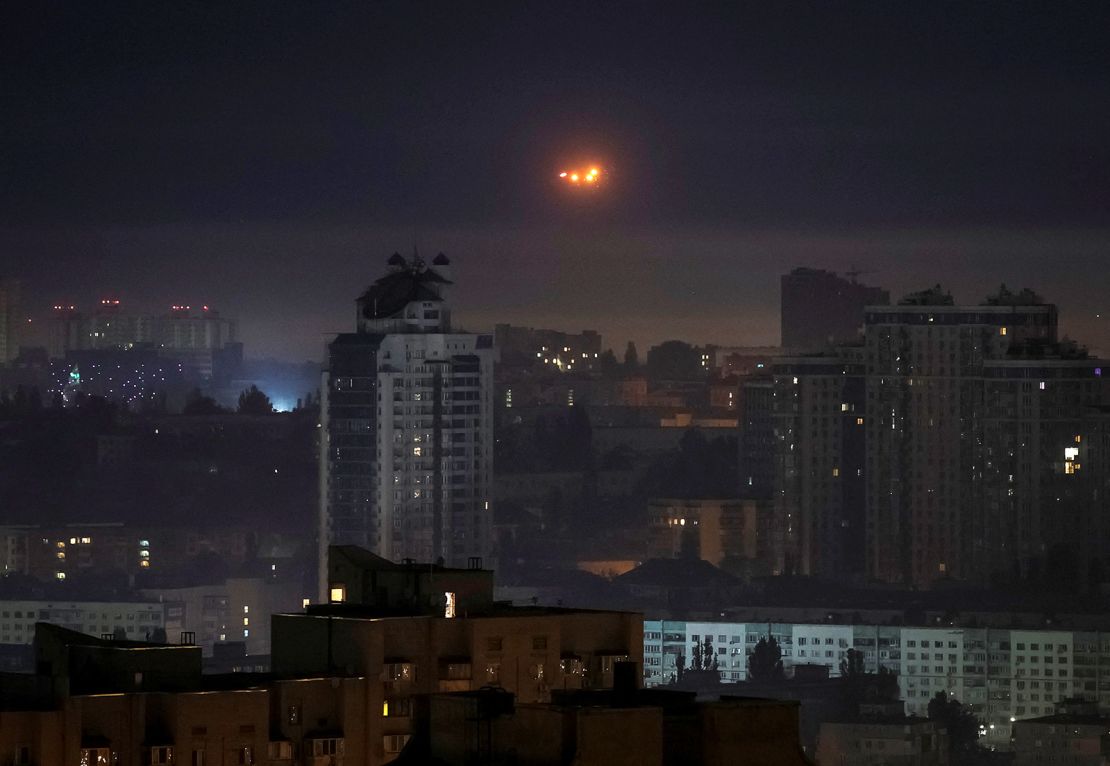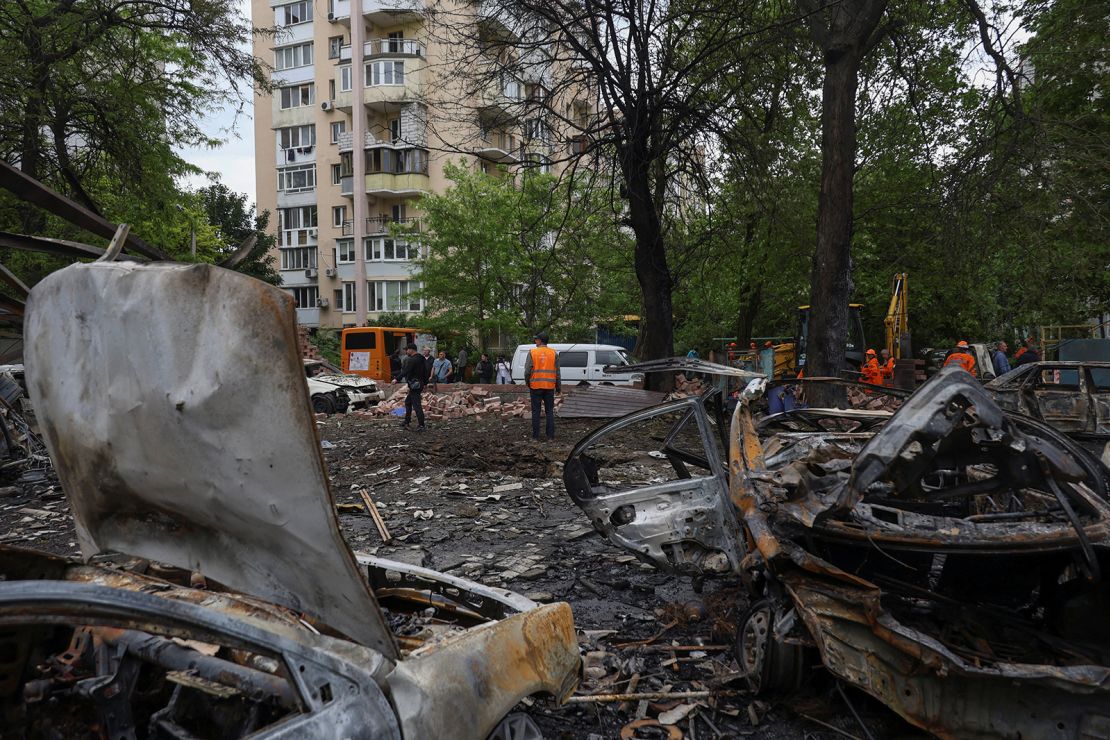Cnn
–
Russia According to the morale of missiles and drones, in an effort to undermine the morale of the Ukrainians – but this also intensifies the ground attacks in many areas along the long line line, according to Ukrainian officials and analysts.
Some of these attacks have succeeded, with Ukrainian Donetsk and northern units falling from certain positions, while certain rural areas of the South have also been lost.
But the improved use of Ukraine drones, deployed in several layers on the battlefield, helped kyiv inflict heavy losses on the opposite forces with a minimum of victims among his own troops. They can become even more critical in the coming months.
Ukrainians try to extend their own drone industry to create defensive corridors along the key sections of the front line, often nicknamed the “drone wall”.
Meanwhile, ignoring the efforts of the American president Donald Trump to ensure a cease-fire, the Kremlin continues a two-part strategy aimed at forcing Ukraine to admit defeat-destroying its cities from the sky and leading to its defensive lines on the ground.
Russia has widely widened its own production of drones and missiles in the past year, allowing mass attacks using several hundred projectiles at the same time. The Russian strategy aims to overwhelm Ukraine’s air defenses with dozens of low -cost drones so that simultaneous missile strikes can succeed.
On the ground, the Russian forces simultaneously investigate the Ukrainian defenses along many parts of the front line line, of Zaporizhzhia from south to north, advancing in abandoned villages and in the countryside open in small numbers.

The Russians do not roll in the Ukrainian defenses but bite themUsing dispersed cars and motorcycles and infantry platoons.
The Russian forces have advanced on average about 14 square kilometers (5.4 square miles) per day so far this year, according to the Institute for the Study of War (ISW) in Washington. This rate implies that they would need almost four years more to finish the occupation of the four regions illegally annexed by Moscow: Donetsk, Luhansk, Zaporizhzhia and Kherson.
These are the often stated objectives of the Kremlin, but he also tries to inscribe a meaning among the allies of kyiv’s Russian superiority over Ukrainian forces.
A large part of the fighting is in Donetsk, the Russians being still determined to grasp the whole region – unless it is put back in the peace negotiations, which is not starting for the Ukrainian president Volodymyr Zelensky.
The Russian Defense Ministry said on Tuesday that a village south of the key town of Kostiiantynivka had been taken. The ISW assesses that the Russian forces have seized around 65 km squares of territory – but remain unable to simultaneously intensify offensive operations in several different directions.
“The main Russian effort in the summer will again be against the key cities of Kostantynivka and Pokrovsk” in Donetsk, according to Jack Watling, principal researcher at the Royal United Services Institute (RUSI) in London.
Hundreds of kilometers north, the Russian units bordered a few kilometers in the Sumy region.
Zelensky told journalists on Tuesday that the Russians “were now giving troops in the direction of Sumy. Over 50,000. We understand that. But we are progressing there. ”
Zelensky said the Russians wanted to “build this buffer zone, as they call it, 10 kilometers (6.2 miles) deeply in Ukraine”, but did not have the capacity.
The Russians support these operations with missiles and attacks of guided bombs launched by air.
Sumy’s attacks follow a kremlin directive on May 21 that the military created buffer zones in northern Ukraine – in the Sumy and Kharkiv regions. This came when President Vladimir Putin visited the Kursk region of Russia through the border, part of which had been seized by a Ukrainian foray launched by Sumy last summer.
The capture of the regional capital of Sumy is probably beyond the Russians – the land is strongly wooded. But thanks to their attacks, the Russian army can prevent Ukrainians from redeploying the units in Donetsk.
Further east, there has also been an increase in the fight around Vovchansk in the Kharkiv region in recent days.
Through the first line line of 1000 kilometers (621 miles), according to analysts, the Ukrainian army must decide which areas are under the most threatened, where to withdraw, how to redeploy – even as many brigades are seriously sub -torce more than three years after the Russian invasion.
The balance of the workforce is still in favor of Russia, despite its heavy losses. Putin recently said that 60,000 volunteers were recruited each month. Observers believe that this is probably exaggerated but that the signing of the bonuses which overshadows civil wages in Russia makes military service an attractive option.
Ukraine’s military leader Oleksandr Syrskyi said Kyiv’s earlier this month had faced “an enemy group combined up to 640,000 people”, higher than at the start of the invasion. Zelensky said in January that Ukraine had 880,000 soldiers, “but 880,000 defend the whole territory. Russian forces are concentrated in certain directions.”
Russian recruitment “has exceeded the objectives of the Kremlin for each month of 2025”, according to analyst Rusi Watling. “Having mixed commanders and accumulated equipment reserves, Russia should now increase the pace and the scale of the attacks.”
But for each square kilometer of the Ukrainian lands that Russia captures, Moscow probably loses around 100 men, according to Western assessments.
Above and behind the fronts as well as in the air campaign led by Moscow, the development and deployment of drones will continue to be critical.
The recent Russian advances in Donetsk, although progressive, were activated by the tactics to isolate the battlefield – the reduction of Ukrainian units of supplies Hitting drones On supply vehicles up to 30 kilometers (18.6 miles) of front lines.
The Ukrainian defenses greatly depend on the drone layers. Ukrainians develop a concept sometimes nicknamed the “drone wall”, designed to “provide a continuous defensive corridor of drones along the most vulnerable borders of Ukraine to inflict important victims on Russian forces”, according to Mick Ryan, author of the Futura Doctrina blog.
Konrad Muzyka, defense analyst at Rochan Consulting, says it “Ukrainian forces are increasingly fatal with the coordination of drone artillery.
But Ryan underlines that an effective drone wall will require integration “and probably decision -making and analysis assisted by AI”, as well as integration with electronic war.
And it’s a double -meaning street. Ukrainian drones are “guided by a small radar, and Russia is now working systematically to locate and target these radar stations”, Watling written.
Zelensky said on Tuesday that Russia planned to go up the production of Shahed attack drones between 300 and 350 per day. When asked if he could happen a time when Russia draws 1,000 drones in a day, he replied: “I can’t say that it won’t happen.”

The sending of drones to their hundreds of aerial defenses, while they accumulate in a target area. Russia has also developed drones that can escape Ukrainian jamming and can fly higher and faster than previous models. Ukrainian analyst Oleksandr Kovalenko said last week that a Shahed had been observed at a record altitude of 4,900 meters.
According to Zelensky, Ukraine is currently deploying F-16 and Mirage fighter planes to complete the air defenses. “We are also heading for drone drone interceptors,” he said on Tuesday.
The former military chief of Ukraine, Valerii ZaluzhnyiSaid that Ukraine must carry out a “high -tech survival war” in which drones play an essential role, to “make the economic burden of the war unbearable for Russia”.
Talk to a kyiv forum Last week, Zaluzhnyi – now the Ukraine ambassador to London – said that his country had failed to exploit innovations “where we were ahead of the enemy yesterday. The enemy has already exceeded us.”
Analysts cite the growing use of short -range fiber optic drones which cannot be blocked as an example of the technological race. Ukraine has not yet increased the use of these drones, which are based on optical fibers to millimeters thick, but long.
Zelensky denied that Ukraine was losing the drone war.
“We will have the same number of drones as the Russians, 300-500 per day-we are very close,” he said.
The problem was not production, said Zelensky – it was financial. While Ukraine seeks to produce more of its own weapons – often in association with Western manufacturers, Zelensky added: “I would like to see us receive $ 30 billion to launch Ukrainian production at full capacity.”
But it is a long -term goal.
Watling, from Rusi, envisages a few difficult months for Ukraine which “will grant a bonus on the effectiveness of Ukrainian drone and artillery operations, the capacity of Ukrainian commanders to preserve their troops and the continuity of supplies which arise from the international partners of Ukraine.”
The continuation of American supplies is not sure because Trump blows hot and to know if Washington should continue to help Ukraine defend himself.
Putin “desperately seeks to prevent the future supply of Western military aid to Ukraine”, according to the ISW, “like the well -resourced Ukrainian forces have constantly demonstrated their ability to inflict unsustainable losses on the Russian forces”.
Innovation and tactical agility will be as influential as the brute force as the war between its fourth summer.
Kosta Gak of CNN and Victoria Buttenko contributed the reports.

